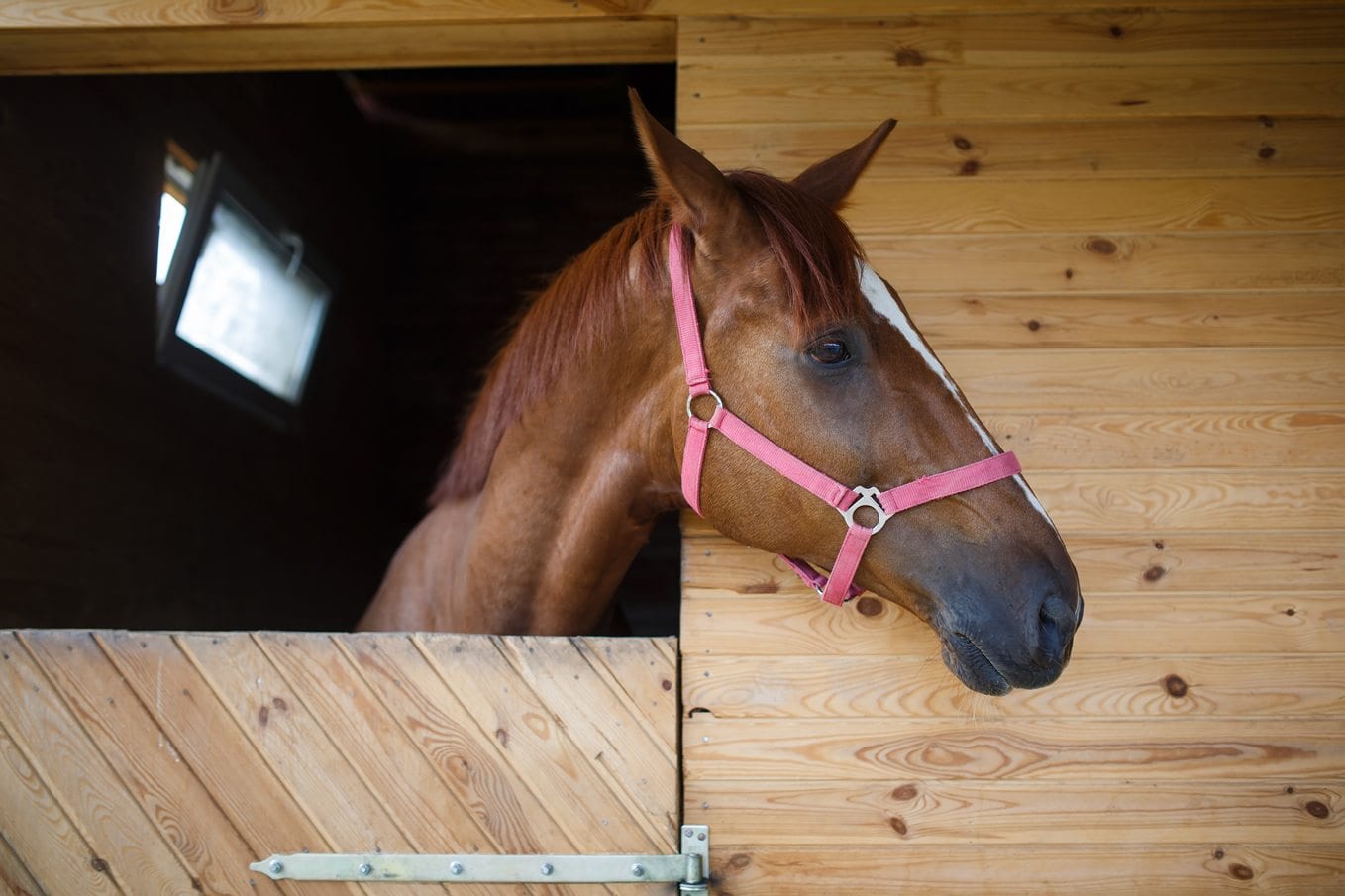Ever had a friend offer to punch you in the arm to take your mind off of pain elsewhere in your body? Your buddy might be truly trying to help (and if you’re enduring something truly horrible, such as digging out the grit that’s buried below your skin after a fall, it might actually work to distract you) — but you’d probably reject his offer, right? After all, your best-case scenario is ending up with both a sore, bandaged abrasion and a bruise on your arm from your friend. In this case, the end result doesn’t seem worth the temporary relief/distraction.
The same philosophy applies to a common condition in the equine world: Right Dorsal Colitis.
Right Dorsal Colitis (RDC) is a term given to ulceration found specifically in the upper right section of the colon of a horse. RDC has been specifically linked to the use of non-steroidal anti-inflammatory drugs (NSAIDs), such as phenylbutazone. Like aspirin or ibuprofen for humans, NSAIDs are a medication used to treat the aches, pains, infections and injuries that occasionally afflict horses.
Unfortunately, like most medicines, there are side effects to NSAIDs. When a horse requires long-term pain relief, or when horses are given high doses of NSAIDs, you’re faced with a challenging scenario. Suddenly, the NSAID becomes the well-intentioned punch from your buddy, and the resulting bruise becomes Right Dorsal Colitis. Neither have anything to do with your original injury, but the “bruise” that is RDC can be a very long-lasting, painful and damaging injury indeed.
Defining Right Dorsal Colitis and the Link Between RDC and NSAIDs
Right Dorsal Colitis is defined as ulceration of the lining (the mucosa) of the large intestine. RDC usually occurs in response to long-duration, high-dose treatment plans using NSAIDs, but has also been observed in horses receiving the recommended dose for a duration of less than a week. Clearly, some horses are more sensitive than others to developing RDC from NSAIDs. It may seem counterintuitive (or just plain ironic) that a painkiller could cause so much pain for a horse. But in order to relieve pain, NSAIDs work to reduce inflammation by inhibiting the release of prostaglandins (compounds with hormone-like activity) that control processes such as inflammation and blood flow. Reducing inflammation is good – reducing blood flow is often bad. When an NSAID works to inhibit prostaglandins, it also inhibits blood flow to the mucosa and disrupts the processes necessary to keep the delicate mucosa healthy. The intestinal mucosa then becomes susceptible to damage and ulceration. A particular segment of the large colon is susceptible to this ulceration – the right dorsal colon – and so the disease is known as Right Dorsal Colitis. The effects of RDC may include:- Damage to the intestinal mucosa can lead to some water leakage from the body, into the bowel, resulting in (usually mild) diarrhea.
- Protein from the body is also lost through the leaky mucosa, which leads to low blood protein. A special type of blood protein, called albumin, is very important for holding body water in blood vessels (which helps the horse stay hydrated, and maintain good blood pressure). If albumin is lost, the water leaks from the blood vessels into the tissues, forming edema. This fluid/edema flows with gravity to the lowest point of the horse, which is why you may see fluid build up ‘under the skin’ in areas like the lower legs, sheath, mammary area, chest and lower belly.
- NSAID toxicity can also cause ulceration of the stomach, mouth and esophagus as wells as damage to the kidneys.
- Phenylbutazone (Bute)
- Flunixin meglumine (Banamine)
- Ketoprofen
- Firocoxib (to some degree). Firocoxib appears to be less associated with RDC, while offering potent anti-inflammatory properties with fewer side effects.
- Meloxicam
How to Identify NSAID Toxicosis in Horses
Clinical signs of toxicosis can occur within days to weeks of starting your horse on NSAIDs. Depending on the location of the ulcer, you may notice some of the primary symptoms:- Oral lingual ulceration: Difficulty biting or chewing forage.
- Esophageal ulceration: Excessive slobbering, pain (stretching neck and groaning) while swallowing.
- Gastric ulceration: A suddenly slow eater, loss of appetite or anorexia.
- Colonic ulceration: Harder to identify (and often a precursor to colitis). Look for signs such as intermittent colic, diarrhea, or weight loss. The resulting protein loss through the damaged colon may lead to ventral edema (swelling), weight loss or lethargy.
- Perform an ultrasound to detect colonic thickening.
- Perform a gastroscopy to check for gastric ulcers.
- Do a fecal blood test to detect albumin loss from injury.
- Do bloodwork to check for low albumin or to detect anemia (blood loss), or other problems related to blood.
The Dangers of Right Dorsal Colitis to a Horse
In addition to creating a lot of pain for your horse (recall that ulcers are sores or holes in the protective lining of the throat, stomach or intestine, which create a painful burning sensation), the scarring caused by ulceration in the right dorsal colon may lead to impactions in the colon. Oral or lingual ulcers make it difficult for a horse to chew, further exacerbating the potential for impaction colic. The holes or sores created by ulcers also leave the colon open to toxins and pathogens that can easily enter the vascular system and create inflammation, septicemia, diarrhea, dehydration, fever, colic, heart attack and even death. In a best-case scenario, your horse will be dealing with pain and discomfort, along with the problems associated with protein loss, or blood loss.How to Treat and Manage Horses with Right Dorsal Colitis
First, immediately discontinue NSAID use. Then, your vet may suggest one of the following, based on the severity of the disease and presenting symptoms:- Gastric lavage, a technique to empty the stomach of toxic materials – this is usually only performed as a preventative measure if a horse has been administered a large dose of NSAIDs very recently.
- IV fluid therapy.
- Plasma or blood transfusion.
- Feeding of psyllium mucilloid to increase concentration of short-chain fatty acids which helps maintain the health of the colon mucosa.
- Safflower oil, or other Omega-3 fatty acid rich oils.
- Stress-reduction.
- Long-term dietary management with high quality pelleted feeds.
- Pharmaceutical therapies.
- In very severe cases – Surgery to reduce obstructive scar tissue.




